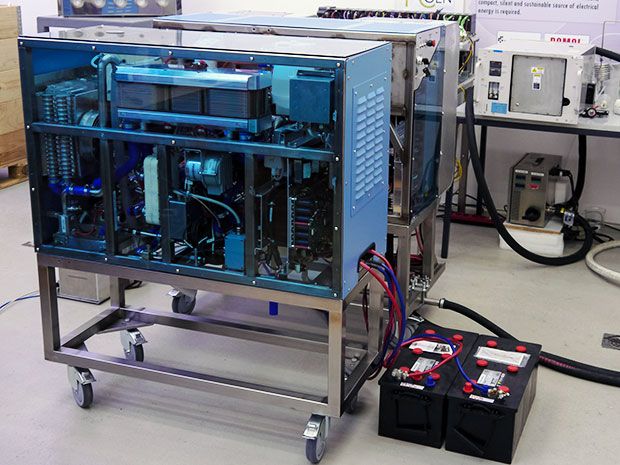Although several options to store hydrogen as a fuel for cars have been investigated, a practical and affordable way to store and distribute hydrogen is still the biggest hurdle to the wide deployment of green, CO2-emission-free cars. Now researchers in Europe have built a demonstration system that might be a first step in circumventing the limitations on hydrogen distribution and storage; they simply extract hydrogen from diesel fuel on the go.
The research group, "Fuel Cell Based Power Generation (FCGEN)," which includes researchers from Volvo Technology (Sweden), Johnson-Matthey (United Kingdom), Modelon AB (Sweden), PowerCell AB (Sweden), Jožef Stefan Institute (Ljubljana, Slovenia), Forschungszentrum Jülich (Germany) and Fraunhofer ICT-IMM (Mainz, Germany) announced in a recent press release the creation of a prototype 3-kilowatt, diesel-fueled fuel cell system that has operated flawlessly for 10,000 hours.
The extraction of the hydrogen from the diesel fuel happens through autothermal reforming, a catalytic reaction in which the diesel fuel is decomposed into hydrogen, steam, carbon dioxide, and carbon monoxide. The CO is then converted to CO2 and water, explains Boštjan Pregelj of the Jožef Stefan Institute, and who is the Principal Investigator of the FCGEN project.
It didn’t escape their notice that the extraction of hydrogen from the diesel fuel releases CO2 directly into the atmosphere. “Actually all carbon in the diesel is converted to CO2, but since the efficiency [of the overall process] is about five times [that of a diesel] engine idling, fuel consumption is 80 percent lower, and consequently, the produced amount of CO2 is decreased by 80 percent,” says Pregelj. That is why the “green” label was given."
The researchers say that the system could generate between 3 and 10 kW of power in trucks; on small aircraft, it would power air conditioners and refrigeration systems. In addition to lowering CO2 emission, the units produce little noise, making them suitable as mobile electricity generators in places, like field hospitals, where quiet is appreciated.
